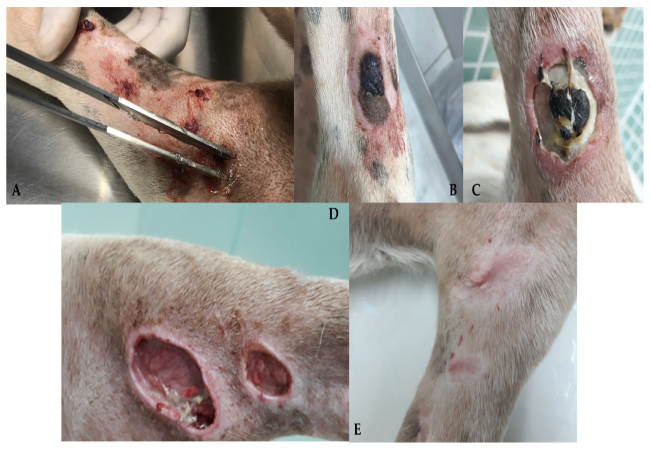Hematomas & Seromas in Dogs: 2025 Vet Guide for Safe Healing 🩺🐶

In this article
Hematomas & Seromas in Dogs: 2025 Vet Guide for Safe Healing 🩺🐶
By Dr. Duncan Houston BVSc
Hi, I’m Dr Duncan Houston, BVSc, veterinarian and founder of Ask A Vet. In this comprehensive 2025 guide, we’ll explore two common swelling types seen in dogs—hematomas and seromas. You’ll learn how to tell them apart, what causes them, how vets diagnose and treat each, what to expect during recovery, and how telehealth helps monitor healing from home. Let’s dive in! 🚑
1. 🧬 What Are Hematomas & Seromas?
a. Hematomas
A hematoma is a pocket of clotted blood that has leaked outside blood vessels into tissue. In dogs, the most common form is the auricular hematoma—occurring in the ear flap (pinna), between skin and cartilage.
b. Seromas
A seroma is a fluid pocket filled with clear plasma (serous fluid), often forming near surgical sites or trauma wounds. Unlike hematomas, seromas do not contain red blood cells.
2. ⚠️ Causes & Risk Factors
a. Auricular Hematomas
- Head shaking or scratching—often due to ear infections, mites, allergies, or foreign objects.
- Trauma—bites, blunt injury, or clotting disorders.
- Brachycephalic & floppy‑eared breeds may be predisposed.
b. Seromas
- Post-surgical accumulation—particularly after big surgeries like spay, mass removal, or orthopedic procedures.
- Trauma or soft tissue manipulation.
- Surgical dead space—where tissue layers don’t adhere properly.
3. 🐶 Clinical Signs
a. Hematoma
- Sudden soft, spongy swelling on ear flap.
- Painful, often hot/red and sensitive to touch.
- Associated signs: ear scratching, head shaking, ear infection symptoms.
b. Seroma
- Soft, fluid-filled bump near surgical incision or injury site.
- Usually non-painful, though large ones may feel firm or cause mild discomfort.
- May fluctuate in size, and the overlying skin can look normal or mildly red.
4. 🛠 Diagnosis & Veterinary Evaluation
a. For Hematomas
- Physical exam: soft swelling on the ear flap, often painful.
- Ear exam: otoscopy and cytology/swabs to identify infection or mites.
- Ruling out clotting issues via bloodwork if recurrent.
b. For Seromas
- A history of recent surgery or trauma is often present.
- Physical exam: fluid-swish on palpation, soft swelling.
- Aspirating fluid—typically clear, straw-coloured—confirms seroma; lab tests may rule out infection.
- Imaging (ultrasound, X-ray) for deep or internal cases.
5. 🩺 Treatment Options
a. Hematoma Care
- Drain & flush: Under sedation, vet makes incision, drains clot, flushes site.
- Drain or sutures: Place indwelling tubes or mattress sutures to prevent reaccumulation.
- Bandage & E-collar: Stabilize the ear and prevent scratching during healing.
- Treat the underlying cause: Address ear infections, mites, and allergies.
- Steroid regimen: Small hematomas may resolve with steroid injections or oral therapy, but take longer.
b. Seroma Care
- Watch & wait: Many resolve spontaneously within weeks.
- Aspiration: Needle and syringe drainage—effective but may require repeat attempts.
- Compression/heat: Warm compresses or pressure dressings can aid resolution.
- Surgical drain: In larger or persistent cases, vet may place a drain or perform drainage ± layered sutures.
- Antibiotics/analgesics: Used if infection, redness, or discomfort is present.
6. 📋 Recovery & Potential Complications
a. Ear Hematomas
- Bandage care and E-collar for 1–2 weeks.
- Drain removal in 7–14 days; sutures removed after ~2–3 weeks.
- Possible scar tissue leads to “cauliflower ear” if untreated.
- Recheck for residual fluid or infection; treat underlying conditions to prevent recurrence.
b. Seromas
- Most resolve in days to weeks with minimal intervention.
- Persistent or large ones may need drain placement or more surgery.
- Watch for infection—signs include redness, warmth, and odor.
- Monitor occasionally for fluid return—rescues may be needed ☑️.
7. 🌐 2025 Telehealth & Remote Support
- Ask A Vet app: Send photos of swelling, fluid color, and ear shape.
- Live review: Vets advise if swelling is normal, needs drainage, or emergency attention.
- Care reminders: Notifications for bandage checks, drainage scheduled, E-collar use, and medications.
- Symptom tracking: Log discomfort, drainage, pre- and post-treatment status for vet review.
- Virtual follow-up: Check healing progress and adjust interventions from home.
8. 🏡 Home Care Tips for Owners
- Keep E-collar on until cleared by vet—prevents trauma.
- Inspect dressing/drain daily—look for redness, swelling, or discharge.
- Maintain clean incision and bandage site—avoid moisture.
- Limit activity—no swimming, rough play, or head shaking triggers.
- Follow med schedules precisely; report any adverse signs promptly.
- For seromas, apply warm compresses only when advised by vet.
9. 💬 FAQs
- Can hematomas heal on their own?
- Small ones might reabsorb, but often leave deforming scar tissue—medical care is best.
- Are seromas dangerous?
- Usually benign, but may become infected or delay healing—monitor closely.
- How often should drains be checked?
- Daily by owner; drain removal in 7–14 days, sutures around 2–3 weeks.
- Does a popped hematoma need a vet?
- Yes—clean area, apply pressure, then seek vet to prevent infection and reaccumulation.
10. ❤️ Ask A Vet Support
- Upload photos/video of paw/ear healing and get expert insights.
- Bandage and drain reminders to ensure proper care.
- Alerts for signs of infection or scarring.
- Virtual consults to adjust treatment plans.
Download the Ask A Vet app to monitor healing, connect with specialists, and keep your pup comfy & safe. 🐾❤️
🔚 Final Summary
Hematomas and seromas are common fluid swellings in dogs. Hematomas result from bleeding into tissue (often in the ear), while seromas are clear fluid collections post-surgery. Both need veterinary assessment to choose the right treatment—drainage, sutures, drains, or watchful waiting. In 2025, telehealth tools like Ask A Vet will enhance support at home through remote monitoring, reminders, and expert guidance. With careful care, most dogs recover well and avoid complications. 🐶
— Dr Duncan Houston, BVSc






